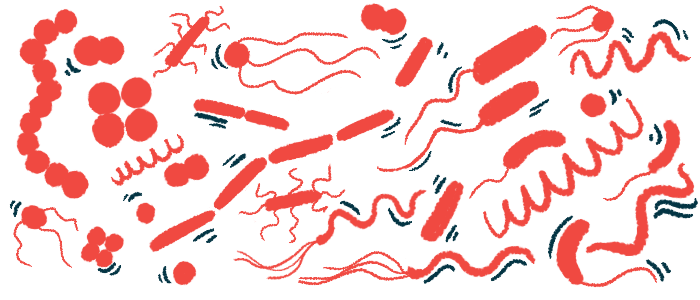Factors that influence the growth of P. aeruginosa biofilms ID’d: Study
Chemical signaling dependent on type of strain, presence of antibiotics

Chemical signaling within the protective clusters formed by Pseudomonas aeruginosa — a common infection-causing bacteria in cystic fibrosis (CF) — is dependent on factors such as surface type, the presence of antibiotics, and the bacterial strain, a study found.
Such infections in CF are often resistant to standard antibiotic treatment, in part due to these clusters, called biofilms.
“P. aeruginosa biofilm is quite challenging to eradicate using currently available antibiotics, and so our goal with this study was to understand what are the factors that govern the growth and stability of these biofilms, and how bacteria escapes these biofilm structures to colonize new locations,” Dharmesh Parmar, PhD, a postdoctoral researcher at the University of Illinois at Urbana-Champaign, and one of the study’s authors, said in a press release.
The study, “Effect of Micro-Patterned Mucin on Quinolone and Rhamnolipid Profiles of Mucoid Pseudomonas aeruginosa under Antibiotic Stress,” was published in ACS Infectious Diseases.
P. aeruginosa infections are often antibiotic-resistant in part because they form biofilms, or clusters of bacteria, that attach to each other and to a variety of surfaces as a protective mechanism. The formation of these biofilms is aided by a type of chemical communication called quorum signaling (QS).
Once a bacteria cluster has reached a certain density, the bacteria release QS molecules to help the colony identify food sources and protect itself against threats, expediting biofilm growth and antibiotic resistance.
“QS helps them to build infrastructure around them, like a city,” Parmar said. “Biofilms have channels, which allow passage of nutrients and information in the form of chemical signals. They also allow crosstalk between colonies if there’s a threat or the stress in the environment.”
Surfaces affecting biofilm growth; how antibiotics impact strains
The researchers sought to learn about what factors influence QS signaling and biofilm formation of P. aeruginosa. They were particularly interested to know if certain surfaces were more or less conducive to biofilm growth and to understand how the presence of antibiotics affected the growth of different strains.
They looked at two different strains of the bacteria — the mucoid strain, which is known to produce thicker biofilms and is often found in CF lung infections, as well as a nonmucoid strain.
In the lab, each strain was grown on different surfaces and the researchers measured how quickly the bacteria began producing QS molecules in the presence or absence of antibiotics.
Across bacteria strains and surface types, antibiotics slowed the production of QS molecules.
In the nonmucoid bacterial strain, the surface type had a significant influence on growth. Specifically, a patterned or ridged surface was associated with slower QS molecule production than a uniform surface. The surface type didn’t influence the mucoid strain.
“While the impact of the antibiotic slowing biofilm growth didn’t surprise us, the large and differential impact on surface structure was striking,” said Jonathan Sweedler, PhD, a professor at University of Illinois at Urbana-Champaign, and a study author.
Certain parts of the biofilm were seen to be more likely to produce molecules associated with a stress response. Researchers believe that’s likely because these parts allow bacteria to move around and colonize new places, but in doing so they are vulnerable to threats like antibiotics.
By understanding biofilm behavior in different conditions, scientists may be able to identify the mechanisms that bacteria use to resist antibiotics.
“The chemically information-rich approaches and analytical techniques we used allowed us to probe these complex molecular events related to biofilm formation across space and time,” Sweedler said.
The researchers next plan to use these techniques to measure biofilm dynamics in lung slices from rats. These discoveries could aid in developing new approaches to prevent bacteria growth in CF lungs, such as a medical device that would deter biofilm formation.








